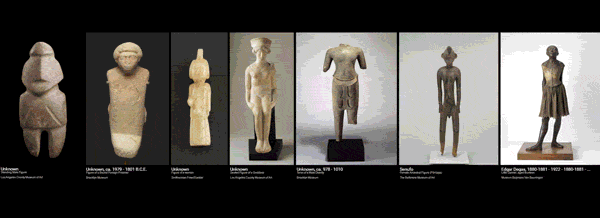
X Degrees of Separation
Stepping away from ProcJam for a moment, here’s an entirely unrelated project: A team at the Google Cultural Institute’s Lab has built a machine-learning based approach to exploring image similarity. Using a large collection of art images, it attempts to construct a route between any two images:

What immediately strikes me is that these paths are both similar to what humans would construct while at the same time they are radically different.
That is, each step the path takes is immediately obvious to the observer. Each step from a dress to a vase makes sense; the transition is smooth.


Sometimes those connections show up anyway, where the visual similarity is too close to ignore. Sometimes the new connections it finds tell us something about the world that we wouldn’t have realized otherwise. But the iron rule of the machine’s metric stands apart from the human associations we’re used to.
It feels, in a sense, like asking an alien to be an art critic, an alien who seizes on a criteria and follows it rigidly. And in doing so, it sometimes exposes things that we didn’t realize about ourselves.
Though I’m not quite sure that’s fair to the programmers: they’re the ones who asked the machine to follow this rule, after all, and they’re (presumably) human. Like all algorithms, the result is based on what we put into it, combined with the Magician’s Apprentice effect of getting exactly what we asked for, no more and no less. The computer is an exactingly literal genie.
You can see the experiment in action here: https://artsexperiments.withgoogle.com/xdegrees
